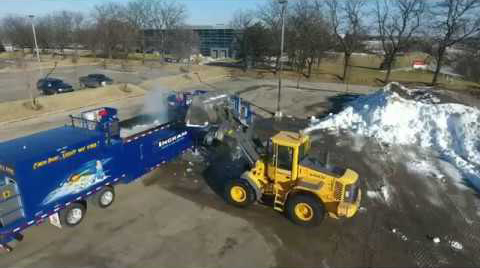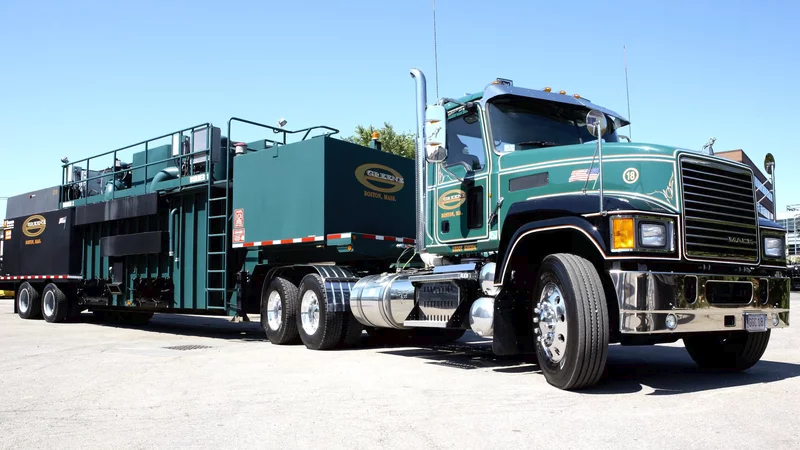Snowmelters
You Do The Math!
The formula for calculating snow tonnage is:
Depth of Snow in Feet X Area in Sq. Ft. = Volume in Cubic Feet.
Snow density can vary from fresh dry snow which is roughly 10 lbs per cubic
foot to heavy wet snow which is roughly 30 lbs per cubic foot.
2000 lbs (1 short ton of snow) = weight in tons divided into Snowmelter capacity
(tons per hour) = hours to melt at a given density at -1 Degrees Celsius.
Note: As with all Snowmelters, the ratings drop with temperature below -1
Degrees Celsius because additional heat input is required to heat the snow to the
melting point.
Formulas for calculating
- Area 1 Acre = 43,560 Sq. Ft.
- Depth of snow in inches (example – 6 inches) divided by 12 = 0.5 Ft.
- Volume 43,560 Sq. Ft. X 0.05 Ft. = 21,780 Cubic Feet
- Density Ranges 10 Pounds per cubic foot to 30 pounds per cubic foot
- Weight = Volume X Density
- 21780 Cu. Ft. X 10 Pounds per cubic foot = 217,800 Pounds
- 21780 Cu. Ft. X 30 Pounds per cubic foot = 653,400 Pounds
- Short Tons = 2000 Pounds Per Ton
Example
- 217,800 Divided by 2000 Pounds = 108.9 Tons
- 653,400 Divided by 2000 Pounds = 326.7 Tons
Trecan 20-PD
- Light Snow Density (10 Pounds Per Cubic Foot) melting time would be 5.4 hours
- Heavy Snow Density (30 Pounds Per Cubic Foot) melting time would be 16.3 hours
Trecan 60-PD
- Light Snow Density (10 Pounds Per Cubic Foot) melting time would be 1.8 hours
- Heavy Snow Density (30 Pounds Per Cubic Foot) melting time would be 5.4 hours
How Many Cubic Yards in a Short Ton of snow?
Answer 8.2
Use the following math and numbers to get this answer
- 1 short ton of snow is 2000 pounds
- divided by 9 (which is 9 pounds per cubic foot -snow density) = 222 cubic feet
- Divide this number (222) by 27 (which is how many cubic feet are in a yard) and you get 8.2 cubic yards per ton of snow.
(240 US Gallons or 908 Liters of water is generated per 1- short ton of snow)
Tonnage Ratings and Operating in Various Ambient Air Temperatures
Trecan Snowmelters are rated at tons of snow per hour at 30° degrees F. That is the Snowmelter will melt X amount of tons of pure snow with an incoming snow temperature of 30° F. If the incoming snow temperature is -4° F, this will result in an additional heat requirement of BTU’s just to raise the temperature of the snow to the melting point. If the nominal capacity of the Snowmelter is to be maintained, then an additional heat input per hour is required. There is no margin in the burners to allow for this extra heat requirement. The burners are designed to operate continuously at their rated input, thus any decrease in incoming snow temperature will result in a de-rating of the Snowmelter. The other major factor which will cause a de-rating is ice, the surface area of a quantity of ice compared with snow is very small and the heat transfer rate is lower, such that it will take longer to melt a pound of ice compared with a pound of snow. Trecan Snowmelters use Submerged Combustion Technology, the most efficient and time tested technology available, requiring only 1.5 US Gallons or 6 Litres of diesel to melt 1 – ton of snow.






